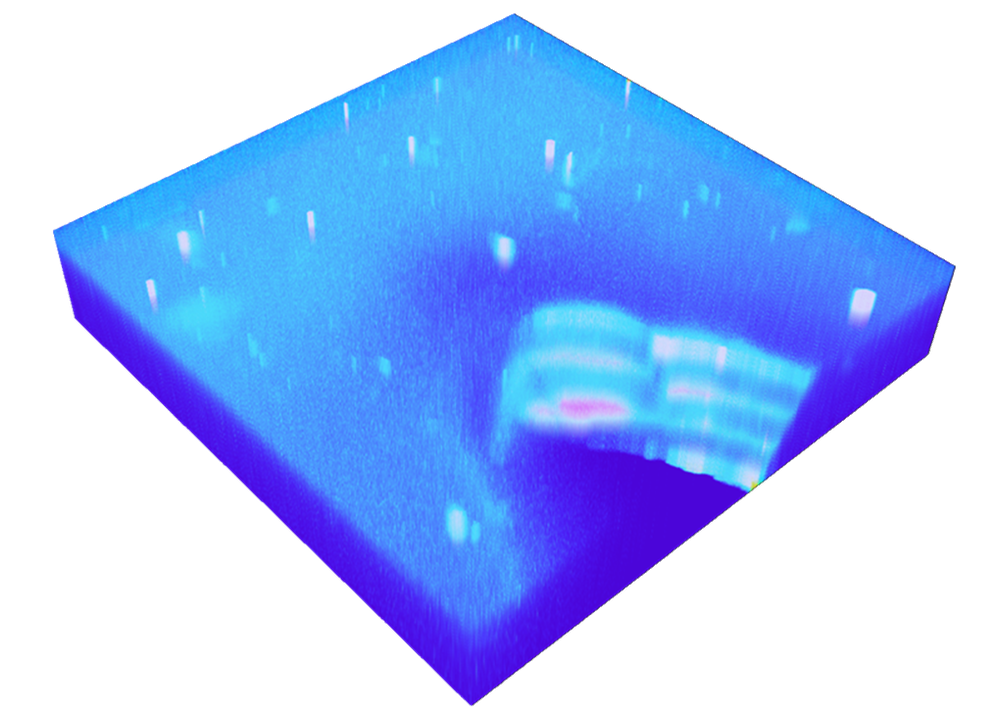Predicting When a Material Will Crack
Soft elastomers, such as rubber, plastic, and silicone, are used in thousands of products, such as gaskets, hoses, and inflatable rafts, but under stress, these materials tend to crack abruptly, without warning. Now, using an improved method to image structural changes in a sample under stress, researchers have shown that a subtle pattern of molecular motions at the surface of the material occurs several minutes before a final failure [1]. With development, they believe the technique may help engineers monitor materials while in use and detect failures well before they happen. The researchers also showed that their approach works for some more brittle polymer materials.
When studying the mechanical failure of a material, researchers often experiment by cutting a small notch into a thin sheet of the material and applying a slowly increasing force that pulls the notch apart. Eventually, a crack will grow and spread rapidly from the notch. Materials scientist Costantino Creton of Paris Sciences and Letters University says that over the past few years, such experiments have led to two general findings for elastomers. First, by embedding light-emitting, force-sensitive molecules into test materials, researchers have shown that, prior to crack initiation, irreversible molecular-bond damage accumulates very close to the initial notch (within 0.1 mm). Second, using sensitive spectroscopy techniques, other studies have found signs of unusual microscopic rearrangements of the polymer molecules occurring over larger regions of the material just prior to failure.
Even so, Creton says, researchers still lack an understanding of how these phenomena fit into a complete picture of elastomer failure, or how these changes might be used to predict failures. Because cracks often come without warning, many manufactures keep on the safe side by making individual parts heavier and stronger than they need to be, Creton says. “Being able to predict a catastrophic failure ahead of time would significantly reduce the safety margins currently required in shaping soft materials for many uses.”
In an attempt to go further, Creton and colleagues decided to combine the two techniques, using the light-emitting molecules in combination with advanced imaging methods. They embedded so-called mechanophore molecules into a 2-mm-thick sample of polydimethylsiloxane (PDMS, a silicone-based material). With the sample illuminated by laser light, these mechanophores emit light if a chemical bond is irreversibly damaged by stress. Cutting a small notch into the sample and then slowly stretching the sheet, the researchers could see the emergence of local damage in the sample under increasing stress.
In particular, they measured how the light from the damaged bonds increased as the sample was stretched toward the ultimate moment of crack initiation, which occurred at a stretch of about 15% beyond the original size. The results showed a gradual increase in the number of broken bonds within a roughly 0.1-mm-wide region around the notch. But just before the material failed, the rate of bond breaking in this region became noticeably faster.
The researchers also used laser light reflected from the surface of the sample to look for nanoscale rearrangements of the polymer molecules taking place on the millisecond timescale. Creton says the technique requires a fairly opaque material, so that the light can penetrate a few millimeters beneath the surface before scattering back out. During progressive stretching, this technique revealed that the molecular damage close to the notch was accompanied by movements of molecules in the nondamaged part of the sample, as far as 1 cm from the notch.
Practically speaking, the ability to detect these molecular-scale changes in a material could offer a possible warning of an impending rupture, Creton says. “These precursors can be observed about 7 minutes before the final fracture, clearly demonstrating their predictive power.” He imagines that in an industrial setting, a part could be stressed and monitored for these signs to learn whether the part needs replacement.
The team also demonstrated similar success in detecting precursors to failure in other soft materials, as well as in brittle ones such as pasta. So far, however, their technique applies only to nearly opaque materials, though they plan to extend the method to a wider range of materials.
The study by Creton and colleagues “is really a work of art,” says Hanne van der Kooij, a specialist in soft matter physics from Wageningen University in the Netherlands. “The authors have elevated the methodologies and our understanding to a whole new level and unveiled the invisible by applying ingenious techniques to an elusive topic.”
–Mark Buchanan
Mark Buchanan is a freelance science writer who splits his time between Abergavenny, UK, and Notre Dame de Courson, France.
References
- J. Ju et al., “Real-time early detection of crack propagation precursors in delayed fracture of soft elastomers,” Phys. Rev. X 13, 021030 (2023).






